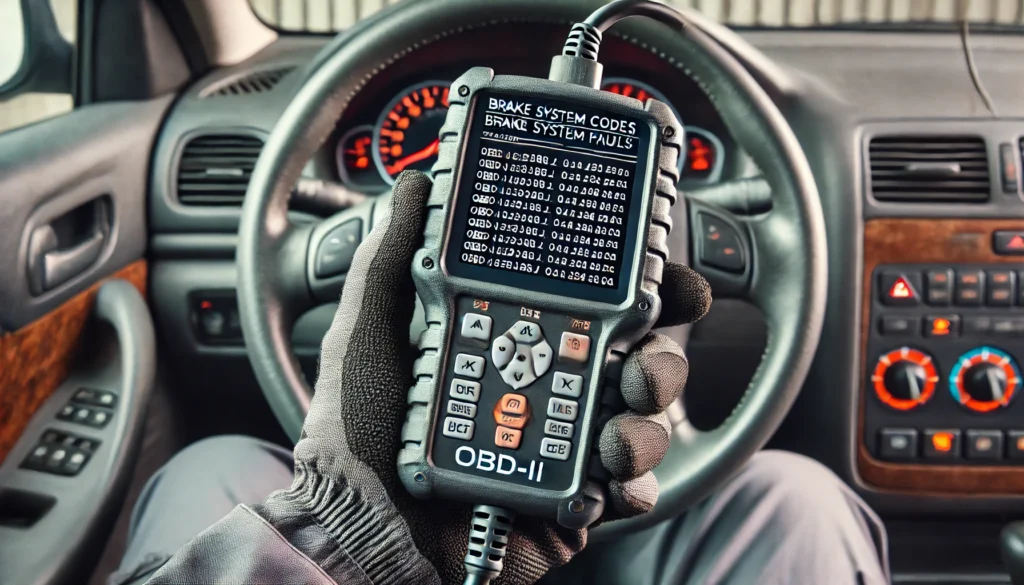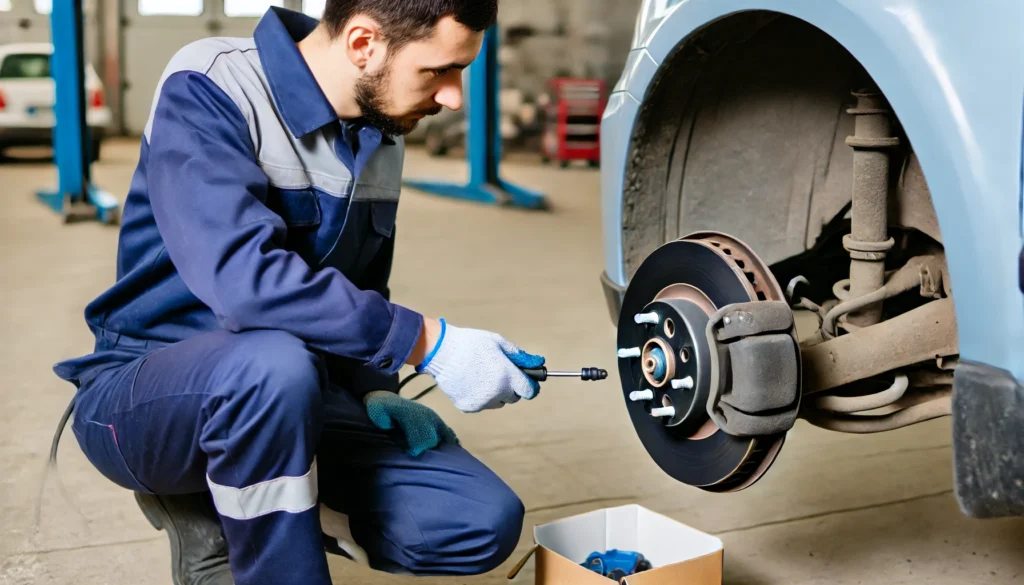The brake system is a vital component of any vehicle, ensuring safe and effective stopping power. When the brake system malfunctions, the vehicle’s computer generates specific error codes that can be read using an OBD-II (On-Board Diagnostics) scanner. These error codes are crucial for diagnosing and fixing brake system faults. Understanding these codes can help you maintain your vehicle’s safety and performance.
Common Brake System Error Codes
- C1201: Brake Control System Malfunction
- Description: This code indicates a general malfunction in the brake control system.
- Common Causes: Faulty brake control module, wiring issues, or sensor malfunctions.
- Solution: Inspect and test the brake control module and sensors. Repair or replace faulty components and fix any wiring issues.
- C1234: Wheel Speed Sensor Issues
- Description: Indicates a problem with one of the wheel speed sensors, which are crucial for monitoring wheel speed and providing data to the brake control system.
- Common Causes: Dirty, damaged, or faulty wheel speed sensors; wiring issues.
- Solution: Clean or replace the affected wheel speed sensor and repair any damaged wiring.

- C1241: Low or High Brake Fluid Pressure
- Description: This code suggests an issue with the brake fluid pressure, which is essential for proper brake system operation.
- Common Causes: Low brake fluid level, faulty brake fluid pressure sensor, or leaks in the brake lines.
- Solution: Check the brake fluid level and top it up if necessary. Inspect for leaks and repair them. Replace the brake fluid pressure sensor if faulty.
- C1265: ABS Motor Relay Circuit Malfunction
- Description: Refers to a problem with the ABS motor relay circuit.
- Common Causes: Faulty relay, wiring problems, or a malfunctioning ABS control module.
- Solution: Test and replace the relay if needed. Inspect and repair wiring issues. Check the ABS control module and replace it if necessary.
- C1288: Pressure Transducer Main/Primary Circuit Malfunction
- Description: Indicates a fault in the pressure transducer, which helps monitor and regulate brake pressure.
- Common Causes: Faulty pressure transducer, wiring issues, or brake control module problems.
- Solution: Replace the pressure transducer if faulty. Repair any wiring issues. Test the brake control module and replace it if necessary.

Diagnosing Brake System Faults Using OBD-II Codes
- Connect the OBD-II Scanner:
- Locate the OBD-II port, usually under the dashboard, and connect the scanner. Turn the ignition on but do not start the engine.
- Read Error Codes:
- Use the scanner to read the stored error codes related to the brake system. Note down the codes for reference.
- Interpret the Codes:
- Refer to the scanner’s manual or an online database to interpret the codes. Each code provides a specific indication of what part of the brake system is malfunctioning.
- Perform Necessary Repairs:
- Based on the error codes, inspect and repair or replace the faulty components. Clear the codes using the scanner after repairs to ensure the issue is resolved.
Importance of Addressing Brake System Faults
Ignoring brake system fault codes can lead to serious safety risks, as the brake system is crucial for vehicle control and stopping power. Regularly checking and addressing these error codes helps ensure that the brake system functions correctly, enhancing overall vehicle safety.
Conclusion
Understanding and interpreting brake system error codes is essential for diagnosing and repairing faults in the brake system. Common codes such as C1201 (brake control system malfunction) and C1234 (wheel speed sensor issues) point to specific problems that need to be addressed to maintain optimal braking performance. Using an OBD-II scanner to read these codes allows for accurate diagnosis and timely repairs, ensuring your vehicle remains safe and reliable.